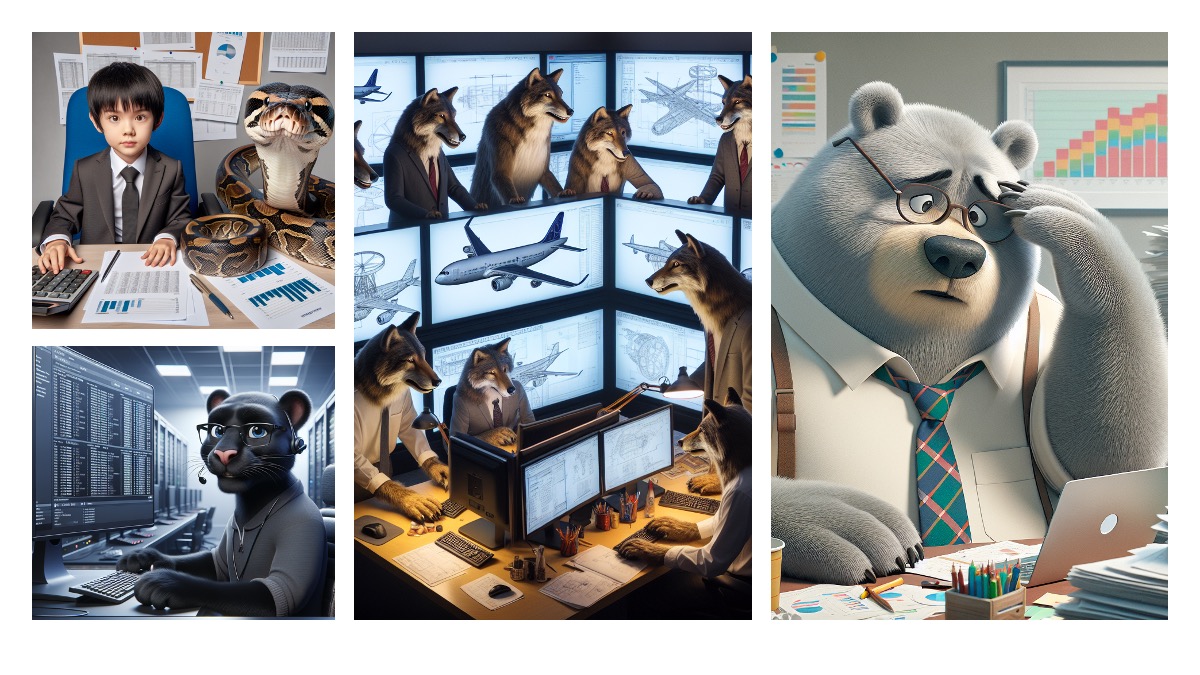The AI jungle book for engineering

It’s a jungle out there, and it’s a jungle in here, too. Those who ignore it receive the Darwin Award one way or another. History is full of examples of powerful and seemingly infallible species, corporations or entire civilizations going extinct nearly overnight.
Rudyard Kipling wrote his stories while observing in real time the transformation of Great Britain from the top world power to a visibly dying creature, overshadowed by friend and foe. A century later, the U.S. is being challenged all around the globe, and Kipling’s admonitions are as true as ever.
Among many Kipling’s charmingly politically incorrect books and poems, “The Jungle Book” and its movie adaptations make a good metaphor for the present state of the engineering and manufacturing domain.
- Wolves are the engineers, indisputable masters of their way of hunting. They go after challenges, data and for lunch in loud social packs. Akela is a seasoned, charismatic chap; he is more about tenacity and teamwork than innovation.
- Baloo is a brain trust around the wolf pack‘s standards and best practices. He teaches generations of wolves all kinds of smart tricks, though their patience usually ends at the Hunting Verse.
- Bagheera is a clever and highly adaptable predator, both jungle-native and experienced with humans. He is a friend of the pack, advising at the times of need like an experienced consulting firm.
- Kaa is full of wisdom, with memories going back like an ultimate long-term archival system. He also has traits of a corporate cyber team, having occasional strangulation impulses. Otherwise, he cares very little about what’s going on around him.
- Shere Khan represents big software vendors, whose platforms strive to rule the entire jungle and digital thread. He hunts sophisticated OEMs together with their entire supply chains, and he goes after hapless startups. While Share Khan is extremely powerful and cunning, he is also lame, likely due to technical debt.
- Bandar-log and various smaller predators mirror niche software vendors and home-grown solutions in engineering IT. Some are smarter and more agile than others. While they often provide great benefits for isolated cases, they lack a grand vision and can inadvertently create downstream problems.
Mowgli is unique. It certainly takes him significant time to grow strong and build up knowledge from the mentorship of Akela, Baloo, Kaa and Bagheera. Yet, in the end he demonstrates a level of intelligence, multi-domain expertise, and leadership skills superior to all of them.
Over the course of “The Jungle Book,” Mowgli and his team utterly demolish every single adversary: Shere Khan, the Monkeys, the Wild Dogs and even the local villagers. Still, their world’s future is rather uncertain. Baloo is getting old. Akela dies without leaving a proper heir. Mowgli moves on beyond the jungle.
The British colonial administration is on the horizon with its overwhelming mix of brains, guts, guns, and bayonets, which Mowgli and his friends cannot possibly match. Unless, of course, Mowgli finds a way to combine Western technology and organization with the wisdom he learned in the jungle.
Which is precisely what we see today: while the modern Asian economies hum on to make the West obsolete, Europe is presently turning into Kipling’s de-industrialized jungle. Fortunately, the United States are in a much better shape, having Elon Musk and the likes as their own American Mowglis.
Modern Western engineering and manufacturing enterprises face a dilemma quite similar to Kipling’s wolves. They must adapt quickly while minimizing disruptions to their day-to-day operations. This includes deciding on their combination of digital thread systems. There is nothing wrong with choosing a single big vendor who can throw a big punch, or a federated collection of smaller niche vendors, as long as it is done in a disciplined and conscious manner. This means avoiding scope creep (including integrations), being wary of vendor lock-in, and staying alert for signs of erratic behavior.
Regardless of the road taken, it is important to have the right digital engineering team and continuous training processes in place, impose reasonable standards, and implement data longevity solution.
Very few conversations today go without generative AI being mentioned, either in terms of excitement about its promise, or fear of security breaches and yet unknown unintended consequences. This very much resembles the jungle debates during Mowgli’s introduction to the pack.
Interestingly enough, Bagheera recognized Mowgli’s potential very early and worked diligently as his early champion. This is where the Senticore team sees its role. Over the past 1.5 years, we have identified a number of use cases where generative AI becomes a persistent enabler of wisdom and a force multiplier for industrial enterprises, bringing ROI in orders of magnitude: documentation automation, workforce enhancement in software development and knowledge capture, and working with legacy and dirty/incomplete data.
The key steps for such projects almost universally include deciding on deployment (cloud, local, or air-gapped), proper grounding of LLM, prompt engineering, and integration with the rest of the tools.
There is nothing better for man (or wolf) under the sun than to eat and to drink and to be merry. Talk to us about your engineering scenarios and generative AI, and let’s have a good jungle life together!